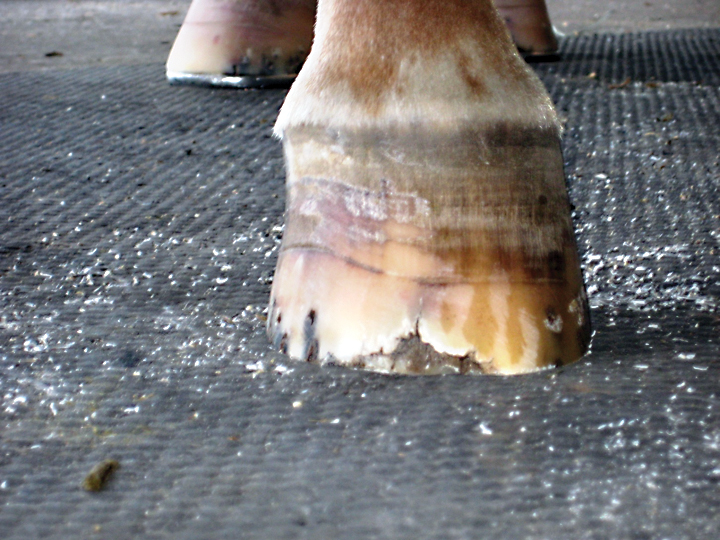What do you do when you know time off is the best remedy for a horse’s hoof problems, but the owner wants him earning his keep?

After trimming, the pony's coronary band was leveled, making the lateral side appear slightly longer than the medial side.
Though rest is often what the horse really needs, Tom Curl says sometimes owners with money invested often don’t want to hear that. Instead, they want that horse working and bringing in the bucks.
“I’ve had people tell me I should be telling these owners to give their horses time off,” says the Vero Beach, Fla., farrier. “That’s not what I get hired to do. I get hired to make that foot go to work.”
Ankle Concerns
Curl offers suggestions for dealing with a show pony that has a severe, long-lasting hoof problem.
“This pony was landing so poorly that the ankle stayed inflamed,” Curl says. “So I just did everything I could to put it back into the show ring.”

This left front foot's coronary band was not level from medial to lateral.
Curl says show ponies — large ponies whose strides differ from those of horses — offer a unique challenge. “It’s pretty tough to do these little guys,” Curl says. “You can’t put a lot on their feet.”
When evaluating any horse’s hooves, Curl recommends a five-step inspection:
- With the horse standing still, look at the hooves head-on.
- Look again from the rear to get a feeling for what might be needed for each individual foot and overall.
- Next, pick up each hoof and look down across the sole surface to check its balance.
- Repeat the head-on evaluation while the horse is moving.
- Repeat the rear-view hoof evaluations while the horse is in motion.
Misshapen Hoof Capsule

Here is the trimmed hoof with a shoe applied.
“You can see how misshapen this pony’s whole hoof capsule is,” he says. “It’s kind of warped with an uneven coronary band lateral to medial.”
Because this pony’s feet leave the ground unevenly, they’ll also land unevenly. So Curl recommended trimming from the bottom on the lateral side and from the top (inside) on the medial side.
“With the shoe applied,” Curl says, “the eye now sees the coronary band as pretty level, and the outside of the foot actually looks longer when in reality, it isn’t.”






